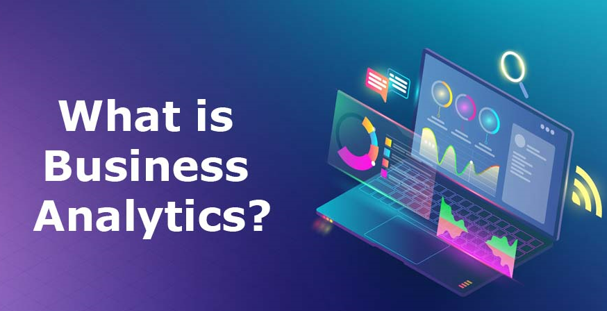
Enquire Now
Duration : 6 Months / Mode : Part Time
ABOUT [BUSINESS ANALYTICS]
Business analytics refers to the practice of using data analysis and statistical methods to derive insights from business data and drive informed decision-making. It involves collecting, processing, analyzing, and interpreting data to identify trends, patterns, and relationships that can help organizations optimize their operations, improve performance, and gain a competitive edge in the marketplace. Here’s an overview of business analytics and its key aspects:
Data Collection and Integration: Business analytics begins with collecting data from various sources, including transactional systems, customer databases, web analytics tools, social media platforms, and external sources. Data may be structured (e.g., databases, spreadsheets) or unstructured (e.g., text, images, videos). Integrating data from multiple sources is essential for creating a comprehensive view of business processes and performance.
Data Cleaning and Preparation: Before analysis, data often requires cleaning and preparation to ensure accuracy, consistency, and completeness. This involves removing duplicates, handling missing values, standardizing formats, and transforming data into a usable format for analysis. Data cleaning is essential for improving the quality and reliability of insights derived from analytics.
Descriptive Analytics: Descriptive analytics focuses on summarizing historical data to describe what has happened in the past. It involves generating summary statistics, frequency distributions, and visualizations to understand the current state of affairs and identify trends or patterns in the data.
Diagnostic Analytics: Diagnostic analytics aims to understand why certain events occurred by investigating causal relationships and identifying factors that contribute to specific outcomes or trends. It involves conducting root cause analysis, hypothesis testing, and correlation analysis to uncover insights into the underlying causes of observed patterns.
Predictive Analytics: Predictive analytics leverages statistical modeling, machine learning algorithms, and data mining techniques to forecast future outcomes or trends based on historical data. It involves building predictive models, such as regression, classification, clustering, and time series forecasting, to make predictions and inform decision-making.
Prescriptive Analytics: Prescriptive analytics goes beyond predicting future outcomes to recommend actions or strategies to achieve desired outcomes. It involves optimizing decision-making by simulating different scenarios, evaluating potential actions, and identifying the most effective course of action based on data-driven insights.
Data Visualization: Data visualization plays a crucial role in business analytics by presenting complex data in a visual format that is easy to understand and interpret. Visualization techniques such as charts, graphs, heatmaps, and dashboards help stakeholders identify patterns, trends, and outliers in the data and make informed decisions.
Business Intelligence Tools: Business analytics relies on a variety of tools and technologies to collect, process, analyze, and visualize data. This includes business intelligence (BI) tools such as Tableau, Power BI, QlikView, and Google Data Studio, which provide capabilities for data integration, analysis, and reporting.
Data Governance and Security: Business analytics requires robust data governance practices to ensure data quality, integrity, privacy, and security. This includes establishing data policies, standards, and procedures, implementing access controls, encryption, and data anonymization techniques, and complying with regulatory requirements (e.g., GDPR, HIPAA).
Continuous Improvement and Optimization: Business analytics is an iterative process that requires continuous monitoring, evaluation, and optimization of analytics models and strategies. Organizations should regularly assess the effectiveness of their analytics initiatives, refine their approaches based on feedback and insights, and adapt to changing business requirements and market conditions.
Overall, business analytics enables organizations to harness the power of data to make strategic decisions, optimize operations, and achieve business objectives. By leveraging advanced analytics techniques and technologies, businesses can gain valuable insights, identify opportunities for improvement, and stay competitive in today’s data-driven economy.